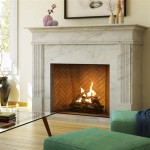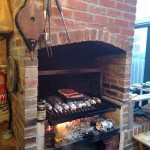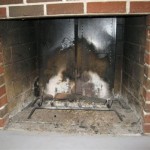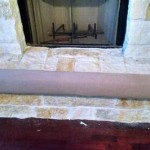Fireplace Pellet Stove Inserts: Efficient Heating Solutions for Existing Fireplaces
Fireplace pellet stove inserts represent a practical and efficient solution for homeowners seeking to upgrade their existing fireplaces. They offer a significant improvement in heating efficiency compared to traditional wood-burning fireplaces, while also providing the convenience of automated fuel feeding and cleaner emissions. This article will delve into the benefits, features, installation considerations, and maintenance requirements of fireplace pellet stove inserts.
Understanding Pellet Stove Insert Functionality
A fireplace pellet stove insert is essentially a self-contained pellet stove designed to fit within the existing firebox of a traditional fireplace. Unlike open fireplaces, which lose a significant amount of heat up the chimney, pellet stove inserts are closed combustion systems. This design ensures that the heat generated is directed into the room, rather than escaping through the flue. The core components of a pellet stove insert include a hopper for storing pellets, an auger system for feeding pellets into the burn pot, a combustion blower to provide air for burning, and an exhaust blower to vent the combustion gases outside the home.
The operation of a pellet stove insert is typically controlled by a thermostat. Once the desired temperature is set, the stove automatically regulates the fuel feed and air supply to maintain a consistent heat output. This automated control contributes to the convenience and efficiency of pellet stove inserts compared to traditional wood stoves or fireplaces.
Advantages of Choosing a Pellet Stove Insert
Pellet stove inserts offer a multitude of advantages over traditional fireplaces, making them a compelling choice for homeowners looking to improve their heating efficiency and reduce their environmental impact.
Increased Heating Efficiency: Traditional masonry fireplaces are notoriously inefficient, often losing more heat up the chimney than they radiate into the room. Pellet stove inserts, on the other hand, boast significantly higher heating efficiencies, typically ranging from 75% to 90%. This means that a greater percentage of the fuel's energy is converted into usable heat, resulting in lower heating costs.
Clean Burning: Pellet stoves produce significantly fewer emissions compared to wood-burning fireplaces. The compressed wood pellets are a cleaner-burning fuel source, resulting in less smoke, creosote buildup in the chimney, and air pollution. Many pellet stove inserts meet or exceed EPA emission standards, making them an environmentally responsible heating option.
Convenience and Automation: Unlike traditional wood fireplaces that require constant tending and refueling, pellet stove inserts offer a high degree of automation. The hopper can hold a substantial amount of pellets, allowing for extended burn times without the need for frequent refueling. The thermostat control system further enhances convenience by automatically adjusting the heat output to maintain a consistent temperature.
Cost-Effectiveness: While the initial investment for a pellet stove insert may be higher than some alternative heating options, the long-term cost-effectiveness can be substantial. The lower cost of wood pellets compared to other fuels, combined with the higher heating efficiency, can result in significant savings on heating bills over time.
Zoning Heating: Pellet stove inserts excel at providing zoned heating, allowing homeowners to effectively heat specific areas of their homes while reducing the need to heat the entire house. This can lead to significant energy savings, especially in homes with poorly insulated areas or rooms that are infrequently used.
Key Features to Consider When Selecting a Pellet Stove Insert
Choosing the right pellet stove insert requires careful consideration of several key features to ensure optimal performance and satisfaction. Factors such as heating capacity, hopper size, blower system, and control panel should be evaluated based on individual needs and preferences.
Heating Capacity (BTU Output): The heating capacity of a pellet stove insert is measured in British Thermal Units (BTUs) per hour. It is crucial to select an insert with a BTU output that is appropriate for the size of the area to be heated. An undersized unit will struggle to maintain a comfortable temperature, while an oversized unit may cycle on and off frequently, leading to inefficient operation and discomfort.
Hopper Size: The hopper capacity determines how much fuel the insert can hold, and thus, how often it needs to be refilled. A larger hopper size allows for longer burn times between refills, which can be particularly beneficial for homeowners who want to minimize the need for frequent attention.
Blower System: The blower system is responsible for circulating warm air throughout the room. A powerful and efficient blower system will distribute heat more evenly and effectively, enhancing comfort and reducing temperature stratification. Look for models with adjustable blower speeds to customize the airflow to suit individual preferences.
Control Panel and Thermostat: The control panel allows users to adjust the settings and monitor the operation of the pellet stove insert. A user-friendly control panel with clear displays and intuitive controls is essential for ease of use. A programmable thermostat allows for precise temperature control and automated operation, further enhancing convenience and efficiency.
Ash Removal System: Pellet stove inserts produce ash as a byproduct of combustion. The ash removal system should be designed for easy and convenient ash disposal. Some models feature self-cleaning burn pots and large ash pans that require less frequent emptying.
EPA Certification: Look for pellet stove inserts that are EPA-certified. EPA certification indicates that the unit meets stringent emission standards, ensuring clean burning and reduced environmental impact. EPA-certified stoves often qualify for tax credits or rebates.
Installation Considerations for Fireplace Pellet Stove Inserts
Proper installation is crucial for the safe and efficient operation of a fireplace pellet stove insert. Installation typically involves several steps, including preparing the fireplace opening, installing a chimney liner, connecting the stove to the venting system, and making electrical connections.
Fireplace Preparation: The fireplace opening must be cleaned and inspected to ensure that it is structurally sound and free of obstructions. The existing firebox may need to be modified to accommodate the dimensions of the pellet stove insert. Any combustible materials in proximity to the fireplace opening should be properly protected with heat-resistant shielding.
Chimney Liner Installation: A chimney liner is essential for venting the combustion gases safely and efficiently. A stainless steel liner is typically recommended, as it is durable and resistant to corrosion. The liner must be properly sized and installed according to local building codes and manufacturer's instructions.
Venting Connections: The pellet stove insert must be securely connected to the chimney liner using appropriate venting connectors. The connections should be airtight to prevent exhaust gases from escaping into the home. The venting system should be inspected regularly to ensure that it is free of obstructions and in good working order.
Electrical Connections: Pellet stove inserts require an electrical connection to power the blower system, auger motor, and control panel. A dedicated electrical circuit is typically recommended to prevent overloading the electrical system. The electrical connections should be made by a qualified electrician in accordance with local electrical codes.
Professional Installation: While some homeowners may be tempted to install a pellet stove insert themselves, professional installation is highly recommended. A qualified installer has the expertise and experience to ensure that the installation is performed safely and correctly, maximizing the performance and longevity of the unit. Furthermore, improper installation can void the manufacturer's warranty and potentially create hazardous conditions.
Maintaining a Fireplace Pellet Stove Insert for Optimal Performance
Regular maintenance is essential for ensuring the continued safe and efficient operation of a fireplace pellet stove insert. Maintenance tasks include cleaning the burn pot, emptying the ash pan, inspecting the venting system, and performing periodic professional servicing.
Burn Pot Cleaning: The burn pot should be cleaned regularly to remove ash and clinkers that can accumulate and interfere with combustion. The frequency of cleaning will depend on the type of pellets used and the usage of the stove. Some models feature self-cleaning burn pots that minimize the need for manual cleaning.
Ash Pan Emptying: The ash pan should be emptied regularly to prevent ash from overflowing and causing a potential fire hazard. The frequency of emptying will depend on the size of the ash pan and the usage of the stove. Dispose of ashes in a metal container away from combustible materials.
Venting System Inspection: The venting system should be inspected regularly for signs of blockage or damage. Creosote buildup in the chimney liner can pose a fire hazard. A professional chimney sweep should be hired to clean the chimney liner at least once a year, or more frequently if necessary.
Professional Servicing: Periodic professional servicing is also recommended to ensure that all components of the pellet stove insert are functioning properly. A qualified technician can inspect the blower system, auger motor, and control panel, and perform any necessary repairs or adjustments. Regular servicing can help to extend the lifespan of the stove and prevent costly repairs.
By understanding the functionality, advantages, key features, installation considerations, and maintenance requirements of fireplace pellet stove inserts, homeowners can make informed decisions and enjoy the benefits of efficient and convenient heating for years to come.

Pellet Fireplace Inserts Lopi Stoves Made In Usa

Pellet Fireplace Inserts Lopi Stoves Made In Usa

Pellet Fireplace Inserts Lopi Stoves Made In Usa

Pellet Stove Inserts Turn Drafty Fireplaces Into Heaters Complete Home Concepts

Pellet Fireplace Inserts Complete Home Concepts

Wood Stoves Pellet Gas Fireplace Inserts

Pellet Stove Inserts The 1 Fireplace

Pellet Fireplace Inserts Insert Installation In Burlington Wi More

Pellet Burning Fireplace Inserts Sierra Hearth And Home

Hampton Greenfire Gci60 Pellet Insert Chimney Drs
Related Posts








